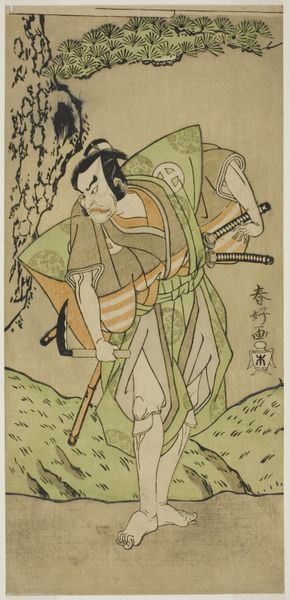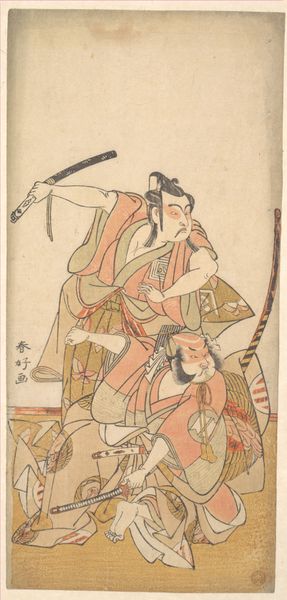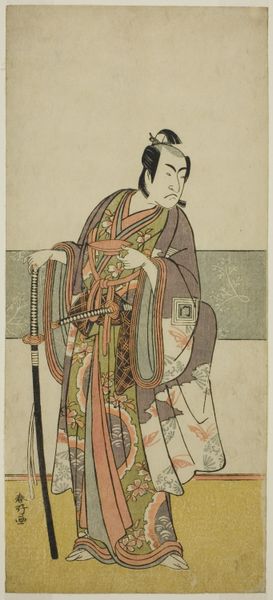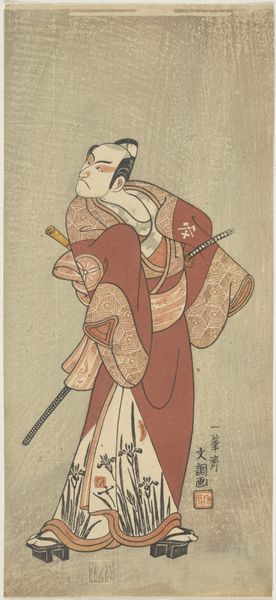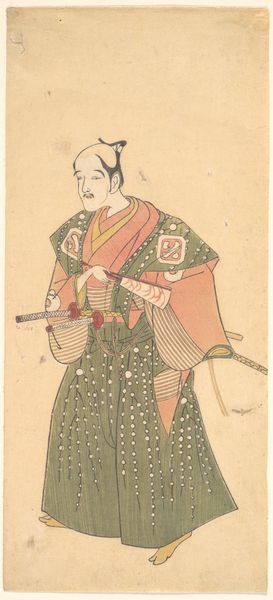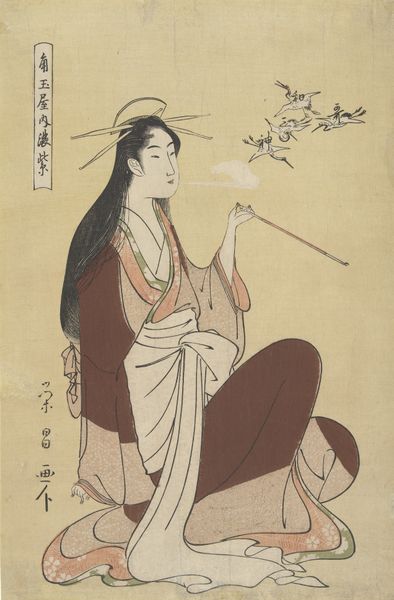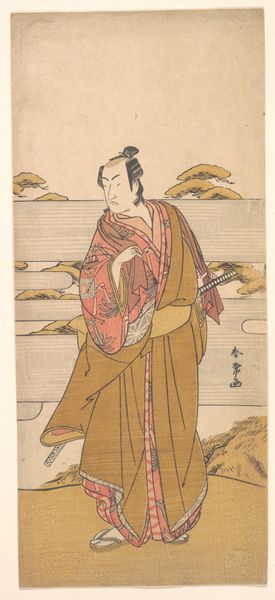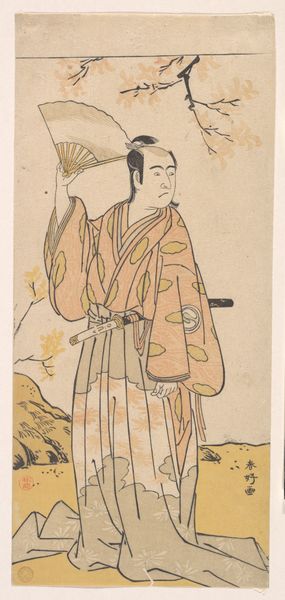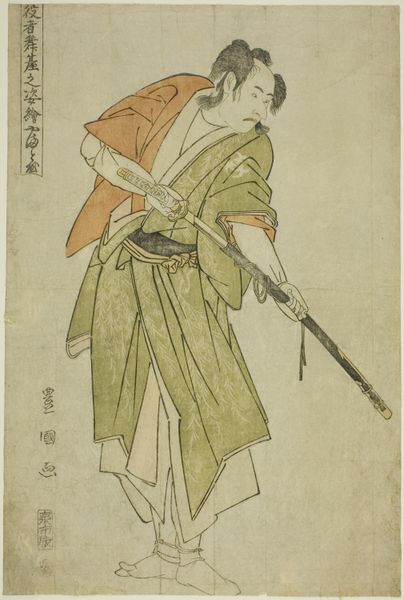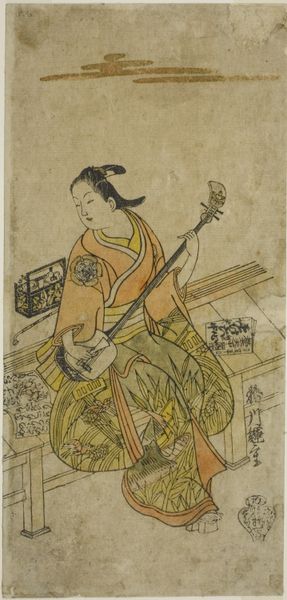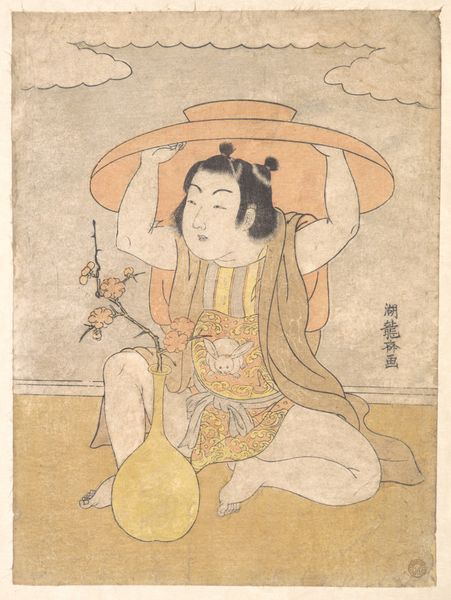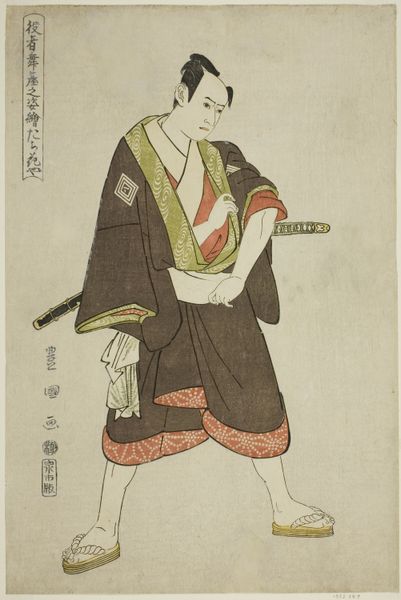
print, woodblock-print
#
portrait
# print
#
asian-art
#
ukiyo-e
#
figuration
#
woodblock-print
#
plant
#
men
Dimensions: Hosoe: 12 3/8 x 5 3/4 in. (31.4 x 14.6 cm)
Copyright: Public Domain
Curator: Right, let’s have a look at Ippitsusai Bunchō's "Ichikawa Yaozō II," a woodblock print, placing it somewhere between 1762 and 1782. It currently resides at the Metropolitan Museum of Art. Editor: What immediately strikes me is the serene melancholy hanging in the air. Despite the vibrant colors and stylized representation, he looks completely world-weary. Almost like he knows this isn't real. Curator: The work represents Ichikawa Yaozō II, a popular Kabuki actor, likely in a role that would have been familiar to the contemporary audience. Kabuki was massively influential, you see, shaping trends and celebrity culture, much like our modern media. Prints like these were essentially celebrity merchandise. Editor: That makes sense. I'm picturing the 18th-century equivalent of a teen magazine centerfold. But what gets me is that tension between the artificiality—the makeup, the pose, even the stylized plants—and the weight in his eyes. Does that read to you like theatrical drama, or genuine emotion somehow breaking through? Curator: I think it’s useful to remember that Kabuki itself plays with exaggerated emotions, almost as a way to navigate socio-political constraints of the time. Expression was heightened, but the form reinforced established order. Prints circulated Kabuki stars not as themselves, but as representatives of an idealized and controlled emotion, filtered through acceptable narrative frameworks. Editor: Interesting! So, the performance wasn't just on stage; it was baked into the entire system of representation. Even a simple print becomes a political act. But if this print is stagecraft reflected upon stagecraft reflected again in this static portrait, I like imagining the actor trying to use it to speak for himself and reveal more to those with deeper vision. Curator: Exactly. And we must consider how these prints operated within the visual culture of the Edo period, reinforcing societal norms while subtly offering an outlet. The composition and subject underscore artistic movements aimed at mirroring and influencing societal behavior. Editor: Okay, so looking at this through the lens of its historical function gives me a much deeper appreciation. It transforms it from a lovely picture into a document. Curator: Precisely. Context changes everything. I'll certainly view things differently, thanks to your intuition here. Editor: As will I. The context adds necessary depth, so I can start understanding that tension between freedom and form as part of the message itself.
Comments
No comments
Be the first to comment and join the conversation on the ultimate creative platform.
